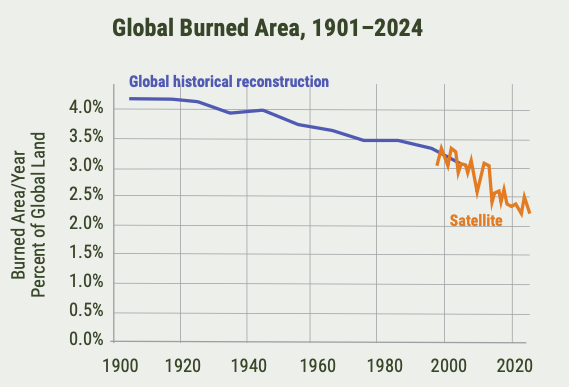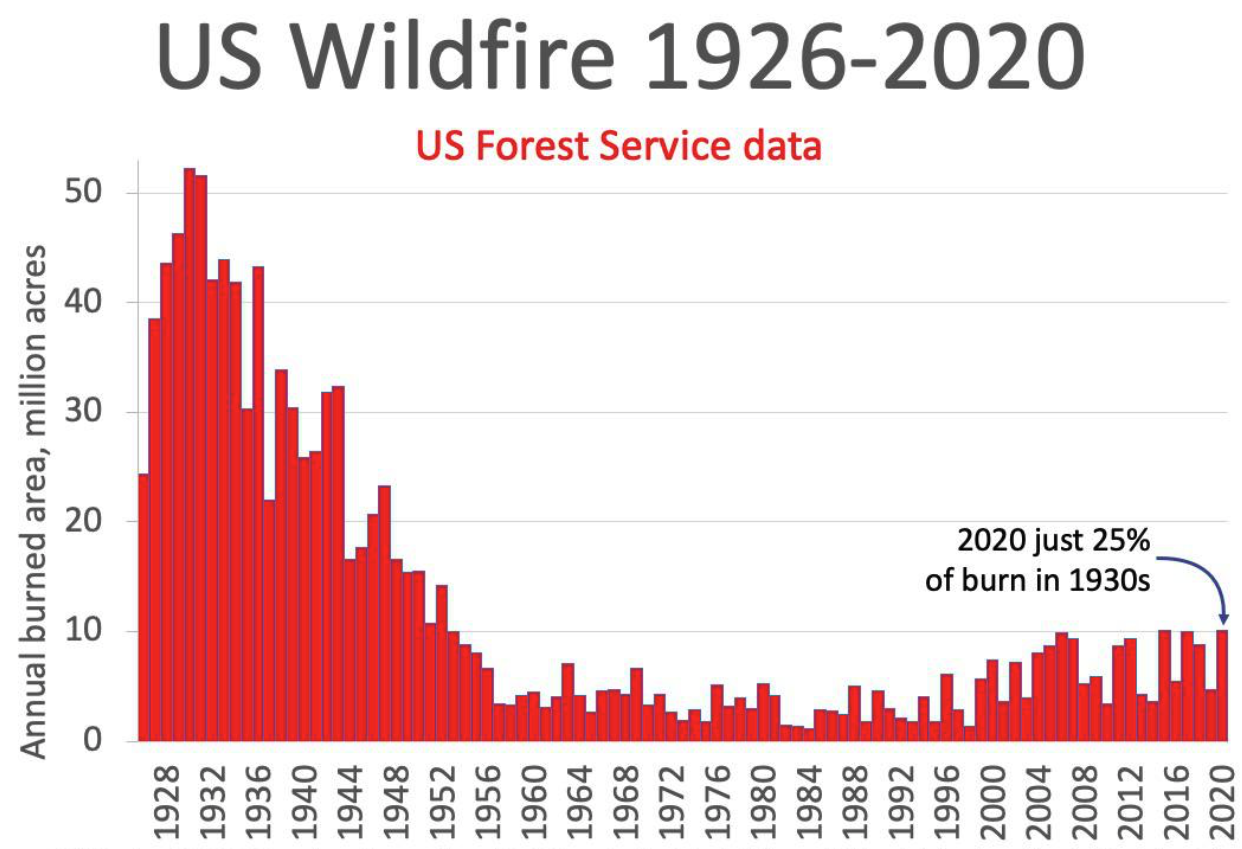Humanity has seen less burned area since 1900, not more—a fact that is rarely reported
By Bjorn Lomborg, Fraser Institute, April 2025
We hear constant claims that there is more fire in the world, caused by climate. For example, the statistics for Canada show much more area burnt in 2023 than any time since 1970 and it is likely that climate is partially to blame. [See Figure 1, which shows that although 2023 was a severe forest-fire year, the overall number of forest fires and burn area since 1990 is down, not up in Canada. See also Figure 3 in the Addendum for U.S. figures.]

But two points are crucially important.
First, most climate fire studies that project an increase in wildfires ignore adaptation. The truth is humans don’t like fire and make great efforts to reduce fire. This is why the data shows that since 1900, humanity has seen less burned area, not more (see Figure 3, but also Figures 1 and 2 for Canada and the U.S.).

<http://globalfiredata.org/analysis.html>,
<https://modis-land.gsfc.nasa.gov/burn.html>, and
<https://gwis.jrc.ec.europa.
eu/apps/gwis.statistics/seasonaltrend>, as of April 30, 2025.
The data from the 20th century in Figure 1 is a historical reconstruction with some uncertainty, but since 1997, NASA has had satellites detecting all significant fires. The record shows a dramatic fall in global burned area—2024 was the world’s second-lowest, and 2022 the world’s lowest ever. This is rarely if ever reported.
Moreover, studies find that with adaptation, fire will be even lower in the future, even without climate action.
Second, reducing emissions is a terribly inefficient way to help. American EPA studies show that even a drastic reduction in emissions will reduce burned area only slightly this century. Focusing on simple policies like better forest management, prescribed fires, and cleaning out undergrowth can help much more, quicker, and cheaper.
The barrage of disaster porn is terrifying our kids and skewing our perception, which can only lead to bad climate policy.
This is part of a chapter from a 2025 Fraser Institute report entitled Hot Air and Cold Truths: Collected Essays on the Myths and Realities of Climate Change, by Danish political economist Bjorn Lomborg. The full report can be viewed at this link.
Addendum
Although climate alarmists point to a recent increase in forest-fire activity (due, of course, to human-caused “global warming”), wildfires were much more common in the United States in the 1930s, when carbon emissions were much less. In other words, it makes no sense to blame current wildfires (and other warming) on human-caused carbon emissions; other climate factors (there are many, including cyclical warming and cooling in the oceans) are far more likely.

